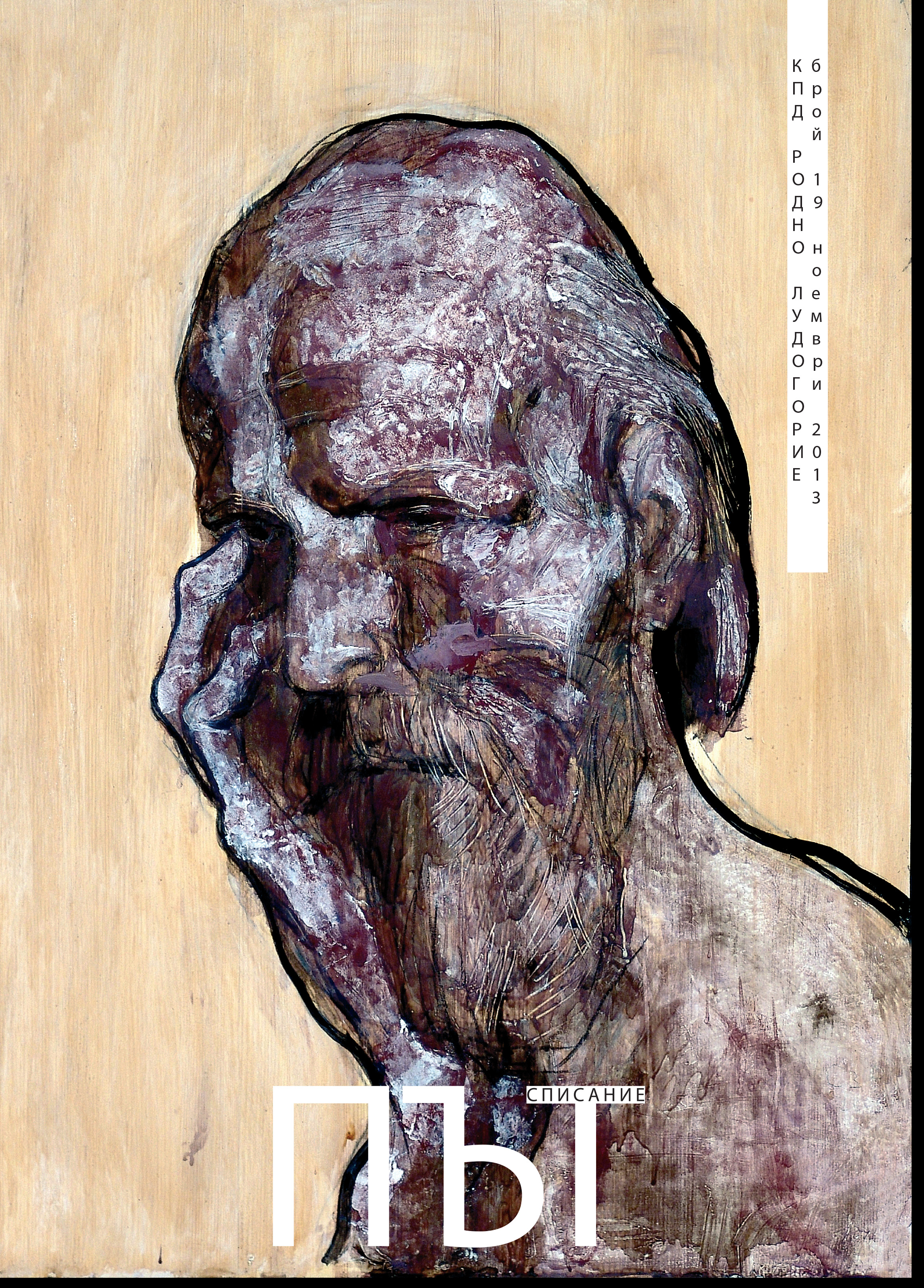
V. Бедреддин и сефевидите
This article represent textual part of the book of Franz Babinger "Sheikh Bedreddin, the son of the judge of Simav"
More...We kindly inform you that, as long as the subject affiliation of our 300.000+ articles is in progress, you might get unsufficient or no results on your third level or second level search. In this case, please broaden your search criteria.

This article represent textual part of the book of Franz Babinger "Sheikh Bedreddin, the son of the judge of Simav"
More...
Piotr Hertel (1936–2010) – a composer of film, theatrical and stage music (among others the hit Parasolka to words of Janusz Słowikowski). He is the author of music for numerous cartoons made in the animation studio Se-Ma-For in Łódź, including soundtracks for legendary TV series Miś Uszatek and Plastusiowy pamiętnik. The aim of the article is to characterize music composed by Hertel for the above-mentioned as well as several other movies in the context of his views on the role of music in cartoons and his compositional technique. The broader knowledge on this topic was gained thanks to the interview made with the members of Hertel’s family: his wife Jadwiga and son Michał.
More...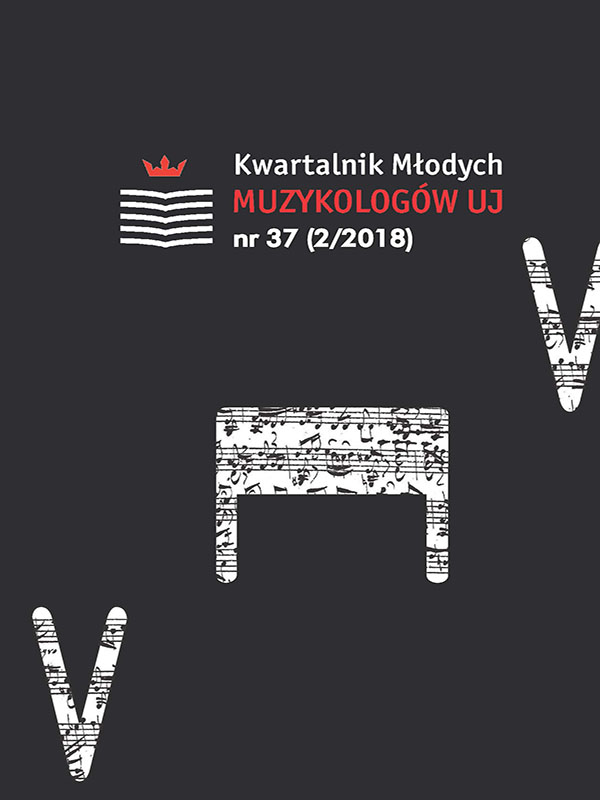
Although nowadays the output of Johann Baptist Schiedermayr is almost completely forgotten, in the 19th century the composer was widely recognized as an author of both sacred and secular music. His compositions were performed mostly in Central Europe, but it should be underlined that the preserved manuscripts display an impressive area in which he must have been known. There are thousands preserved sources that confirm his popularity in the past; therefore, it is disturbing as well as intriguing that Schiedermayr is usually overlooked by scholars investigating music of the early 19th century. In my paper, I present life of the composer, including existing literature that concerns this topic, and I make an attempt to reconstruct his output as hitherto no one have done it. It appears that Johann Baptist Schiedermayr was well-educated and played a crucial role in the musical life of Linz at his time. Besides his achievements as a musician, conductor and teacher, he composed a vast variety of musical pieces, although he focused mostly on church music. Based on the studies done so far, we can assume that he created hundreds of compositions presenting his excellent compositional technique as well as musicality; many of them were also printed. Nevertheless, further research is absolutely necessary in order to broaden knowledge of this brilliant persona and his oeuvre.
More...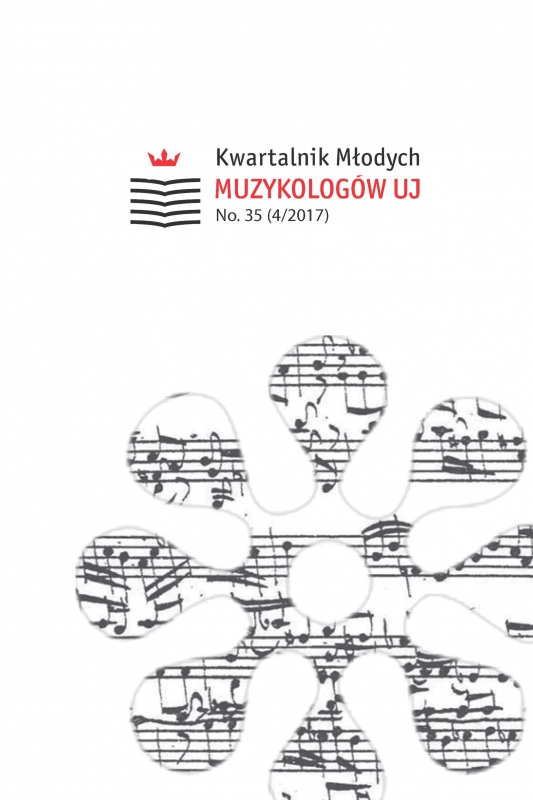
Since the middle of the 19th century, Franz Schubert’s song cycles Die schöne Mullerin and Winterreise are not only considered as an outstanding contribution to the Lied genre, but also as “romantic” compositions par excellence, whose protagonists might be depicted adequately only by performances of male singers. The “masculine nature” (Carl Lafite) of these thoughts, emotions and actions might be inappropriate for female singers. This attitude, which is still present today (even amongst professional musicians and musicologists), though, contradicts not only the performance practice of the early 19th century, but even Schubert’s handling of his songs. In fact, the idea of these two cycles as “men’s cycles” has only developed in the course of the 19th century, when various impacts such as the general upvaluation of the Lied genre, the transfiguration of the composer, the interpretation of his songs as being a personal statement, and the idea of Werktreueshaped the reception of Schubert’s compositions. These factors led to the consolidation of strong and still valid power structures, in which men are regarded as the norm, whereas women (and other alternative voice categories like countertenors) appear as deviation from this norm. These structures are tightly related to similar conditions and principles which have been outlined in the past decades by the masculinity studies on higher levels of our society. In this paper, I will set out this whole process by delineating the performance practice at Schubert’s time, his own attitude (insofar as it is possible), the various influences of romantic musical aesthetics, and the development of the mentioned performance tradition towards the end of the 19th and the beginning of the 20th century. Furthermore, a number of statements from the 21st century will demonstrate that these concepts are still common today, and I will correlate them with some certain principles pointed out by masculinity studies from the last decades.
More...
The work concerns Giovanni Battista Bassani’s output and its reception with a particular emphasis on manuscripts preserved in the collection from parish church in Grodzisk Wielkopolski. The oeuvre of this composer has been preserved to a huge amount today—there are 441 manuscripts and 67 prints preserved in 287 copies.The article consists of two parts. The first chapter presents a list of sources of the composer’s works, created using the RISM database with special attention to the Polish sources. In addition, a list of sources identified as the transmission of Bassani’s output is presented. The second part of the article characterises the composer’s works preserved in the collection from parish church in Grodzisk Wielkopolski.
More...
Dresden played no role in Carl Ditters von Dittersdorf’s life, but history made this city one of the most significant places regarding preserved sources of his works. In the Department of Special Collections (German: Sondersammlungen) of the Sächsische Landesbibliothek—Staats- und Universitätsbibliothek in Dresden (English: Saxon State and University Library Dresden, abbr.: SLUB), there are, among others, more than thirty archival sources containing Carl Ditters von Dittersdorf’s symphonies. That makes it the third richest collection of symphonic works by this composer. The majority of them comes from court’s theatre of Duke Frederick August Braunschweig-Oels in Oels (Öls, Polish: Oleśnica). It is one of the most representative collections of Dittersdorf’s symphonies from all known archives. There are several composer’s autographs, partial autographs, a large variety of works from all periods of his activity, and a few unique copies of symphonies as well. A minor body of Dittersdorf’s symphonies comes from two different sources, until recently unknown. One group is the set of partbooks (contemporary with Dittersdorf), including—apart from Dittersdorf’s works—several dozen movements of serenades, symphonies, string quartets etc. of G.B. Sammartini, J.G. Graun, J.Ph. Rameau, the Stamitz family and J. Haydn, apparently used in performances on the occasion of court activities, not in concerts. The second, from 1860s, is the set of scores, prepared by C. Mehner.
More...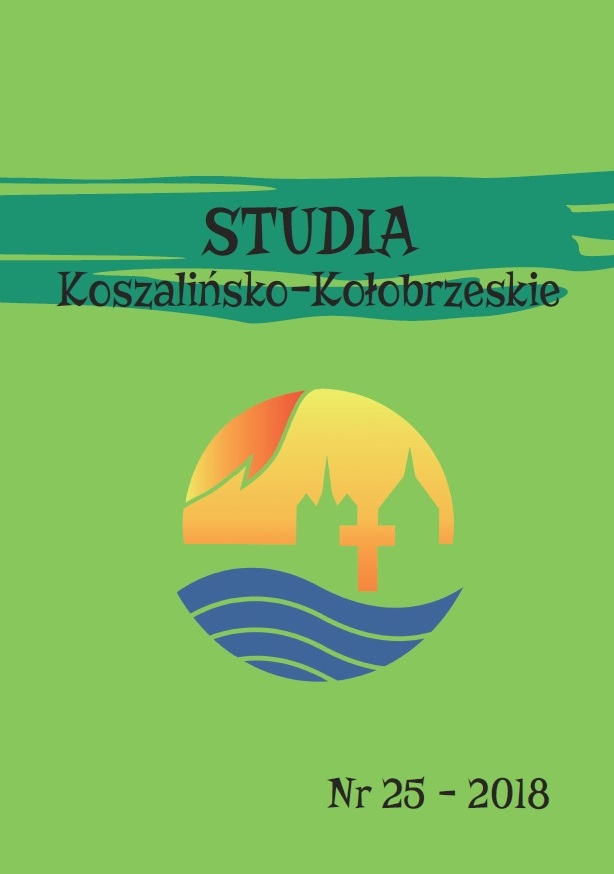
The purely introspective philosophy, based on reasoning and that from centuries has analysed the mental activity of man needs the scientific research of brain, the only real method of objective investigation of the mental processes. I called this association ‘neurophilosophy’. In this paper, the cerebral processes involved in the knowledge of truth are described: he phenomenal analysis, the epistemic one, processes as thinking, judgement and consciousness.
More...
Alexandru Ciurcu was born at 29thJanuary 1854 inTransylvania (then in Austria-Hungary) where his Romanian parents took refuge after the 1848 revolution. Between 1876 and 1885, working as journalist in Bucharest, he invented a „jet cylinder”: a prototype of the future propulsion system he will make later in Paris with his friend Just Buisson. Ciurcu and Buisson tested the system on a boat, navigating upstream Seine River on 13thAugust 1886; so, 131 years ago, they tested the first manned vehicle ever powered by jet propulsion!On 12th October 1886, they received a French Patent for “Reactive propulsion system”.Before contract signing with French Civil Navigation Ministry, they made a last test on 16th December 1886; unfortunately, a pressurised container exploded, killing Buisson and anassistant. Ciurcu, wounded, survived. He later resumed testing the system on a railroad trolley; successfully, but not enough to develop an airship propulsion system.
More...
Is there a hidden reality that governs our Universe ? Wheeler, Bekenstein, Susskind, and ‘t Hoft, all of them renowned physicists,the latter being a Nobel laureate, sustain this concept. It is about a theory, recently set out by the four physicists mentioned before, the so - called Theory of the Holographic Universe that puts the information in the first place. Today, this theory is accepted by a group of physicists that is growing steadily, and that studies the String Theories. First, Stephen Hawking predicted that the „black holes”, which seemed to be swallowing everything, were manifesting their presence by emitting radiation with an extremely low temperature. If a black hole can evaporate, a most portion of the information it contains is lost forever, said Hawking.Later on, it was the turn of Leonard Susskind, one of String Theories’ founder, and ‘t Hoft, both of them working under Wheeler’s guidance, to state that Hawking radiation emitted by a black hole represents the support, material substratum that delivers information related to what is happening in such a hole. This information remains on the surface of a universe that is created through a Big Bang by that black hole (Bekenstein, Susskin, ’t Hoft). And, as a laser beam that passes through bi-dimensional symbols on a transparent surface will generate a tri-dimensional hologram, in the same way the information on the surface of a universe such as ours will generate, in an adequate way, within it, all tri-dimensional entities inside the universe.Juan Maldacena formalized this theory with an audacious mathematical conjecture. Briefly, here is the story of the „Holographic Universe”. The most important fact for us is that Mihai Drăgănescu's Ontological-Informational Model -very similar but not identical with the Holographic Universe Model- was formalized before the last one. And according to Drăgănescu's approach, the Theory of the Holographic Universe may be considered a particular case of the Ontological-Informational Modelas you will see in this paper later on.
More...
This paper presents a brief overview of the historical evolution of approaches to the design of structures for wind loads. The interdisciplinary nature of this field is noted, involving as it does elements of micrometeorology, extreme wind climatology, aerodynamics, wind tunnel testing, structural dynamics, aeroelasticity, structural reliability and, last but not least, structural engineering. Technological advances in the areas of simultaneous pressure measurements and “big data” processing are shown to have led to a new paradigm in the relation between the structural designer and the wind engineer, wherein the former is in full control of all aspects of the modern design process, referred to as database-assisted design.
More...
The article addresses the structure of scientific research in the context of the methodology of science. This goal is realized through the concrete material of physical theory, detailing the structure of scientific research and its elements; its process and the laws it obeys; its results, which leadthe process; its motives, e.g. the "driving forces" of research and the role of philosophy in the process.The paperexamines the theoretical phase of researches as a synthesis of the empirical and the speculative,in contrast to the existing literature that presents the opposition between theoretical and empirical research. The steps of knowledge of the objective laws in a particular area are analysed: the empirical research,the non-fundamental theoretical,the speculative, and the fundamental theoretical; this analysis allows the generalization of the patterns of scientific research. Particular attention is paid to the speculative research and its main elements. The“methodological mechanism” of formation of new fundamental conceptions in science is unravelled. The essence of this mechanism consists of some non-logical cognitive operations (idealization, choice of “Gestalt”, substitution, generalization). The knowledge of corresponding combinations of these operations made by the investigator facilitates the process of research, decreases the probability of errors in the scientific cognition.
More...
In opposition to the traditional studies on the history of various science, which tend to only insist on the evolution of scientific progress, the modern approach tries to link this evolution to the natural, economic and social environment in which the science evolves. Also, the evolution of various scientific disciplines is conceived as a discontinuous process, a result of successive paradigm shifts. Applying these principles to water resources engineering in Romania, the article assesses that, due to the economic and social changes which occurred in 1989, water management in Romania has encountered an anomaly which requires the definition of a new paradigm. The principles which should be applied in this exercise require adopting a holistic approach, designing an adaptive management based on the theory of complex adaptive systems and using transdisciplinary methods. For all practical applications, water resources engineering cannot be considered an independent discipline any more and requires all other related disciplines to be taken into account and joint solutions for all the involved branches of activity should be developed. The article presents various examples in which these principles have been applied in various countries to water related projects.
More...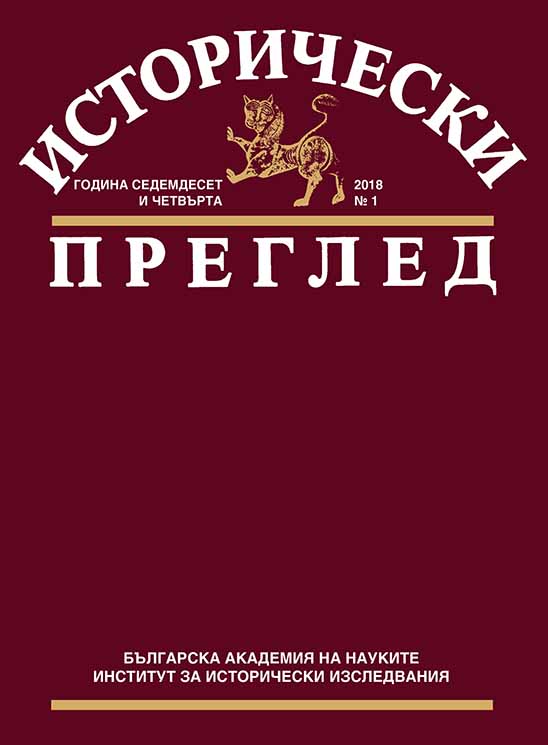
The article introduces several unknown documents from the Başbakanlık Osmanlı Arşivleri – Istanbul about intentions of some Bulgarian colonists settled in Russia during the first half of the 19th century to re-emigrate in the Ottoman Empire in the 1870s. This disposition of Bulgarian colonists was mainly caused by the decision of the Russian authorities to recruit them to military service as a result of the reform which equalized the rights of foreign colonists to those of other Russian peasants (1871). Unlike other well-known cases of re-emigration of Bulgarians from Russia to the Ottoman Empire, this episode has remained so far out of the researchers’ attention. The documents are written in French and are part of the official correspondence of senior diplomatic officials in Odessa, Braila and St. Petersburg with the Ottoman Minister of Foreign Affairs. They are published in French and are accompanied by а Bulgarian translation and historical commentary.
More...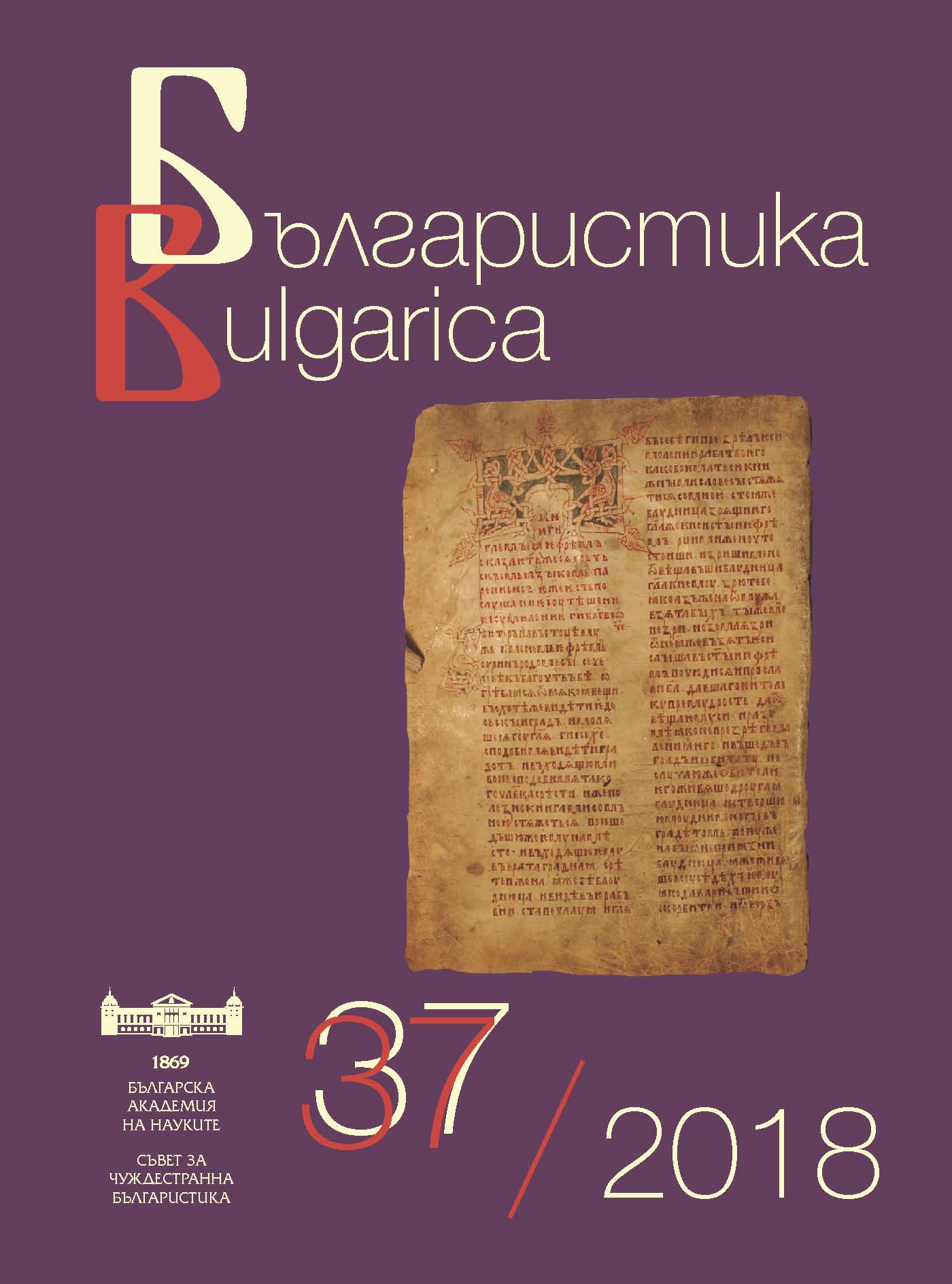

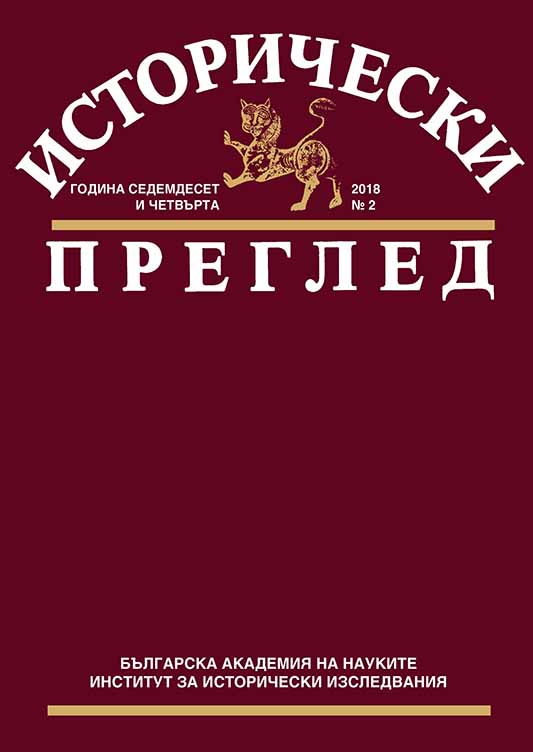
The author publishes in her article the marginal notes left by the hand of priest Bonne Stoychov of Belchin village. The notes are excerpted from three sources – “The Gospel of Enlightenment” (1856) and “New Testament” (1859) from the collection “Bulgarian Old Printed Books 1806–1878” of the National Library “St. St. Cyril and Methodius “ and from a book with an unknown title kept in a church in the village of Belchin. An attempt is made to present Bonne Stoychov as an author of marginal notes by his choice of topics in them and his appraisal of their value expressed in his decision to rewrite some of them. The presented source material gives an opportunity to outline the personality and the life path of a Bulgarian priest – Bonne Stoychov.
More...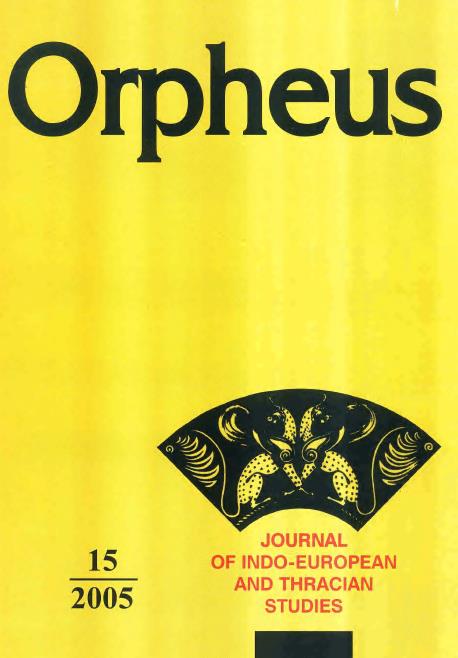
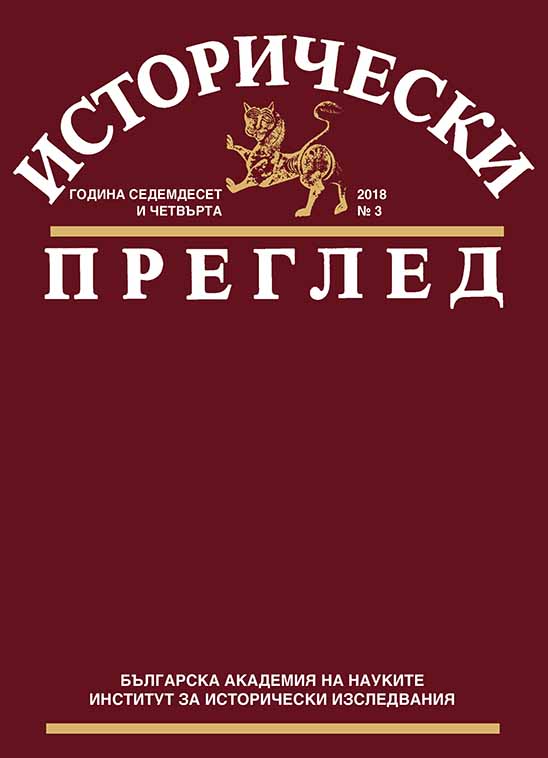
Unpublished letter of Sofia Bishop Stefan to the regent of Yugoslavia Paul Karađorđević from 1938, reflecting the views of the Bulgarian cleric on the ideas of “Integral Yugoslavia” and the unification of the two Balkan states.
More...